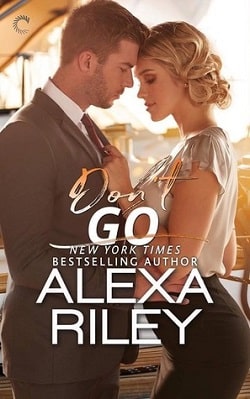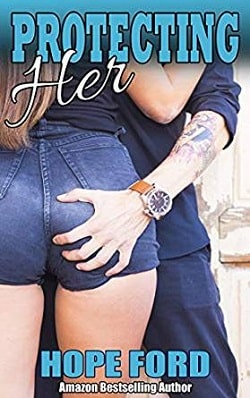Okay, I thought, I’ll do it, but what I really needed to achieve my ambition, the one masquerading behind the photography, was good fortune.
Fat chance of that coming my way.
?
The invitation dropped on the doormat a week after Christmas, one of the busiest times of year for the hotel. Mum had congratulated me with a cup of Earl Grey. Dad gave me one of his brief hugs and returned to examining theAngling Times. For them it was part of a long line of events that I had initiated in the hope of turning a hobby into a career and as for my unspoken passion for visiting castles, they both ignored the obsession, believing it would eventually pass, as had many of my other childhood fancies.
I’d had my first vivid daydream at Ashby Castle just before my tenth birthday. It had left me excited, unafraid and beguiled, as only a child can be when imagination takes hold. I badgered my parents to take me to North Wales during a school holiday just so I could visit Harlech and Caernarvon Castles, and as I hoped, discover my imaginary experiences were portable and unique to each place. What I sensed at Harlech was visceral even among the commotion of other visitors. Short stocky men, clad in helmets and leather tunics, milled around me, calling out in alarm. I distinctly felt the whistle of arrows flying past at great speed. While I had been distracted, Richard had teased me, pretending to wave a sword in my face. It came as no shock when he enlisted in the army, married the caterer serving the barracks, and was now stationed somewhere in Iraq. His wife, Miranda, dutifully sent her in-laws updates. He was safe, she believed. The Americans were close to capturing Saddam Hussein.
Those early imaginary encounters were rather like a blurred canvas lacking in detail, but they still managed to inspire strong emotions in me, and their effect couldn’t always be hidden. Mum once found me pinned against the stone wall of the battlements, white as a sheet, eyes tightly shut. She thought I was afraid of heights, or something, and refused to take me to any more castles until I begged her that it was nothing but a dizzy spell brought on by hunger. An easy excuse – what child isn’t always hungry?
The morning of the exhibition, I could barely eat a thing she put on my breakfast plate. It was a relief to hear the doorbell.
Yvette’s car was slightly bigger than mine, the one on loan from Mum. The generous boot space swallowed the stiff boards between which were sandwiched the precious prints. Weeks of deliberation, and I’d finally chosen the images for the exhibition, and spent a small fortune on enlargements.
‘I still can’t believe it. What if they take one look at my portfolio and banish me from the premises?’ I nibbled on glossed lips.
The weather wasn’t helping my negativity. March had brought rain not sunshine. The damp start to the day was an unfortunate harbinger of anxiety.
‘Will you put a sock in it?’ Yvette said; her lips twitched, and she shifted her grip on the steering wheel. ‘Didn’t I say three’s a charm? You spent ages making the selection. I think what you’ve chosen is spot on. Classic photography, good compositions. Some unusual, off kilter for the subject. Going black and white—’
‘It’s daring, I know.’ I wasn’t in the mood to critique my choices.
Yvette smiled. ‘I’ll help you set up. Then I’ll leave you to it.’
The Curzon Institute for Art was a private college for those with deep pockets and excellent connections. However, once a year, it opened its doors to non-residential talent and put on an exhibition worthy of its reputation. Most, nearly all, exhibitors paid for their stands in the hope their profile would be lifted to new levels. Critics came from as far as London and Edinburgh, even Paris.
The only possibility of me making it into the exhibition was by the route offered to a handful of locals, and those lucky artists were exhibited for free. Although fine art was the norm for the Curzon, for this particular show they permitted a broad spectrum, including photography.
Yvette and I arrived at the institute mid-morning, approaching the grand old house along a shady avenue dotted with daffodils and crocuses. It was touching, watching Yvette fuss over the transportation of the prints from car to hall. My attention was slightly distracted by the polished brass doorknobs and Baroque ceiling, a permanent exhibition of zealous wealth.
The lighting wasn’t especially good.
In an hour or so the place would be buzzing. The caterers had already popped open the corked bottles and served dainty petit fours on platters. There would be dealers with fancy galleries or private clients, the kind of people who prized provenance and attended auctions in Sotheby’s.
One man had arrived early. He fingered the stem of his champagne glass and picked up a brochure. The expression on his face was difficult to read. Scanning the contents of the programme, sipping occasionally, he lingered by the entrance, several long paces from my stand, which was beyond the last window and where the lesser artists were carolled, nervously adjusting tilted picture frames.
Yvette squeezed my hand and left me, as agreed. It was the right thing to do; I had to manage on my own. What great artist hadn’t begun their career with a lowly status and little money, she espoused. I pointedly remarked that many had died just as impoverished.
Yvette walked toward the door, and as she passed behind the man with the champagne flute, she nudged his shoulder. He jerked, nearly dropping both brochure and drink. Yvette said something; probably an apology, smiled, and pointed in my direction. Their conversation was brief, and reminded me that Yvette was comfortable in this environment having studied art and visited countless galleries. She continued on her way without looking back.
Pacing in front of my portfolio, I fidgeted with my watchstrap. The nervous habit was hard to break. I shouldn’t have worn short sleeves. As for the skirt, it was ridiculously long. It hung limp and colourless like worn out drapes. The smile I attached to my face was acquired from my repertoire: charming and well-practised. Underneath it, I was a shivering bundle of nerves.
The man moved purposely toward me. The streaks of grey hairs behind his ears sharpened into focus. What brought him in a direct line to me? Perhaps the ancient aspect of my compositions had caught his eye. I liked to think I’d trapped the fascinating vividness of detail and made it appear timeless. Scale was always a problem with buildings, whether old or new, and instead of vast landscapes with rolling hills for surroundings, I focused in, tighter, closer, and made the building material my subject.
In one image, at the bottom of the tower, the stone walls, roughly hewn, held together with crumbling mortar, were crisp, textured and honeycombed. The distorting tilt was obvious, and unfortunate. I remembered the day. I had stood at the base of the tower and aimed upward to a solitary unglazed window. The light spun out through it in a glorious halo. Even in black and white, the warmth emanated and drew the eye to a distant, invisible horizon, a hint of blue sky, without the blue.
A castle, obviously. Where, he wouldn’t know. It didn’t matter. The point wasn’t to recognise a specific place.
I stepped to one side and sensibly said nothing. He worked systematically through the portfolio. The prints, varying in size, were unframed, but mounted on plain boards. Courageously, I had done something different. The subject – the flintstone tower wall, the isolated window with weathered carvings – was the central feature of each photograph. What changed was the light, the angle or distance, the focal pointed shifted. In one, I had levelled myself with the window.
‘How?’ he asked.
Intuition told me which photo he was looking at. ‘A mound opposite.’
Another picture was snowbound, icy and bleak. The next wet and rain soaked. I wasn’t afraid to venture out. The spring image – daffodils in one corner – was awash with greyscale, highlighting the missing colours. The contrast in shade and light was razor sharp. I liked to think I couldn’t have done a better job than an artist with a paintbrush.
‘Daring,’ he admitted. ‘One subject. Where?’















